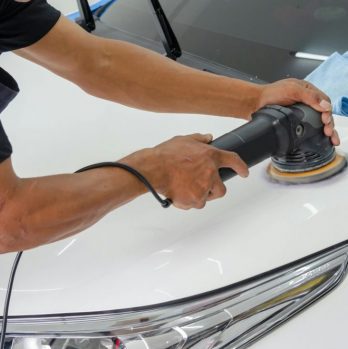Classic American Cars: A Detailed Exploration of Automotive Icons

Introduction:
American cars have an illustrious history, capturing the imagination of car enthusiasts worldwide. From the iconic muscle cars to the elegant mid-century designs, classic American cars have left an indelible mark on the automotive industry. In this article, we will take a comprehensive look at these timeless automotive marvels, discussing their significance, popularity, variations, and historical perspective. So let’s rev up our engines and dive into the world of classic American cars.
An Overview of Classic American Cars

Classic American cars encompass a wide range of vehicles that were produced typically between the 1920s and 1970s. These cars represent a golden era of automobile design, characterized by sleek curves, chrome accents, and powerful engines.
These automotive icons were not only symbols of American engineering prowess but also reflections of the social and cultural landscape at the time. From the Ford Model T, which revolutionized car manufacturing and mobility, to the Chevrolet Bel Air, an epitome of 1950s style and luxury, classic American cars have played a vital role in shaping the country’s automotive heritage.
A Comprehensive Presentation of Classic American Cars
Classic American cars can be categorized into various types, each with its unique characteristics and allure. Some popular types include:
1. Muscle Cars: These high-performance vehicles, such as the Ford Mustang and Chevrolet Camaro, were known for their impressive horsepower and aggressive styling. They dominated the American automobile scene during the 1960s and 1970s, becoming iconic symbols of power and speed.
2. Luxury Cars: Brands like Cadillac and Lincoln produced luxurious, spacious, and opulent automobiles, providing a smooth ride and lavish interiors. Models like the Cadillac Eldorado and Lincoln Continental epitomized elegance and sophistication, catering to those seeking comfort and prestige.
3. Classic Pickup Trucks: American pickup trucks, such as the Ford F-150 and Chevrolet C/K, embodied ruggedness and versatility. These vehicles were designed to tackle tough terrains, tow heavy loads, and serve as reliable workhorses, making them a favorite among truck enthusiasts.
4. Station Wagons: Station wagons, such as the Chevrolet Impala and Ford Country Squire, were popular family cars, offering ample seating, cargo space, and a distinctive rear-facing third-row seat. Known for their practicality and comfort, these wagons were a common sight on American roads in the mid-20th century.
Quantitative Measurements of Classic American Cars
To gauge the impact and popularity of classic American cars, various quantitative measurements can be examined. Sales figures, production numbers, and auction prices provide valuable insights into their demand and value among collectors and enthusiasts. For instance, the Ford Mustang has sold over 10 million units since its introduction in 1964, making it one of the most successful American cars of all time.
Moreover, auction results showcase the appreciation and desirability of classic American cars. For instance, a 1967 Chevrolet Corvette L88 sold for a record-breaking $3.85 million in 2014, highlighting the astronomical values collectors are willing to pay for rare and exceptional examples.
Exploring the Distinctions Among Classic American Cars
While classic American cars share certain design elements and cultural significance, they also exhibit key differences in terms of styling, performance, and target market. These distinctions can be observed through various aspects:
1. Design Aesthetics: Classic American cars range from streamlined and sleek designs of the 1930s to the bold, chrome-laden styling of the 1950s and 1960s. Each era had its signature looks, reflecting the evolving tastes and design philosophies of the time.
2. Performance and Engineering: Muscle cars were renowned for their powerful engines and straight-line acceleration, while luxury cars prioritized a smooth ride and luxury amenities. Pickup trucks focused on durability and towing capacity, appealing to those needing utility and practicality.
3. Target Market: Different classic American cars catered to distinct consumer demographics. Muscle cars often appealed to younger enthusiasts seeking speed and thrill, while luxury cars targeted affluent buyers searching for opulence and comfort.
A Historical Perspective on the Advantages and Disadvantages of Classic American Cars
Throughout the history of classic American cars, various models have displayed unique advantages and disadvantages. These factors influenced consumer preferences and shaped the industry. Some notable examples include:
1. Advantages of Classic American Cars:
– Vast customization options, allowing owners to personalize their vehicles.
– Availability of powerful engines for exhilarating performance.
– Stylish and eye-catching designs that evoke nostalgia and admiration.
– Historically low production numbers, increasing their rarity and collectability.
2. Disadvantages of Classic American Cars:
– Fuel inefficiency due to powerful engines and heavy body constructions.
– Limited safety features compared to modern vehicles.
– Costly maintenance and restoration due to scarcity of parts.
– Lack of modern technological advancements, such as advanced infotainment systems.
The Imminent Factors Influencing Car Enthusiasts’ Purchase Decisions
When considering purchasing a classic American car, several factors play pivotal roles in the decision-making process for automotive enthusiasts. These influential factors include:
1. Authenticity and Originality: Car collectors highly value originality and authenticity when buying classic American cars. Vehicles with unmodified drivetrains, matching numbers, and period-correct accessories often fetch higher prices and are deemed more desirable.
2. Condition and Rarity: The overall condition of the car, its maintenance history, and rarity significantly impact its value and desirability. Pristine, well-preserved examples tend to command premium prices, especially if they belong to limited production runs or feature unique options.
3. Historical Significance: Classic American cars associated with significant historical events or cultural moments gain immense appeal among collectors. For example, the Ford GT40’s victories at the 24 Hours of Le Mans contribute to its iconic status and extraordinary value.
4. Brand Reputation: Established brands like Chevrolet, Ford, and Chrysler have built a strong reputation for producing classic American cars, making their models highly sought after. These brands’ heritage and reliability influence enthusiasts’ purchase decisions.
Conclusion:
Classic American cars represent a rich tapestry of automotive excellence that continues to captivate car enthusiasts worldwide. From their stunning designs and exceptional performance to their cultural significance and historical legacy, these American icons have left an everlasting imprint on the automotive industry. Whether you are drawn to the raw power of muscle cars, the elegance of luxury models, or the nostalgia of vintage pickup trucks, classic American cars offer a journey through time, capturing the essence of an era that still resonates with automotive enthusiasts today. So buckle up, start the engine, and embark on a timeless adventure with classic American cars.











